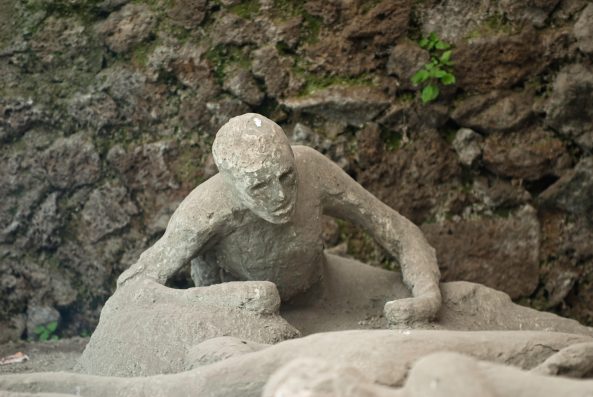A New DNA Analysis Of Pompeii Victims Revealed Some Have Been Misidentified

In the ruins of the ancient city of Pompeii, houses, frescos, and artifacts have been preserved for visitors to observe.
They can also see some of Pompeii’s victims, who were immortalized by 19th-century archaeologists who used plaster to fill the voids left by their burned bodies.
These casts have become symbols of human tragedy and loss. In one dwelling, four figures huddled beneath a staircase have long been assumed to be a family. Part of the family was thought to consist of a mother holding a child.
But now, a new DNA analysis of skeletal remains in the Roman town has revealed that some of the victims have been misidentified.
The family in the House of the Golden Bracelet, named after the mother’s jewelry, are not related, and they are likely all male.
“This research shows how genetic analysis can significantly add to the stories constructed from archaeological data,” said David Caramelli, a co-author of the study and an anthropologist at the University of Florence.
“The findings challenge enduring notions, such as the association of jewelry with femininity or the interpretation of physical proximity as evidence of familial relationships.”
The researchers determined that the man wearing the bracelet had black hair and dark skin. Three of the four individuals under the staircase had genetic ties to regions like North Africa or the Eastern Mediterranean.
The genetic analysis also reframed the narrative surrounding two individuals in the House of the Cryptoporticus, locked in an embrace as they died.

BlackMac – stock.adobe.com – illustrative purposes only, not the actual person – pictured above is a victim of Pompeii
It was believed that they were either sisters, lovers, or a mother and daughter. But the new study found that one of the victims was male, and the pair were not maternally related.
“We were able to disprove or challenge some of the previous narratives built upon how these individuals were kind of found in relation to each other,” said Alissa Mittnik, an archaeogeneticist at the Max Planck Institute for Evolutionary Anthropology.
“It opens up different interpretations for who these people might have been.”
In the 1860s, archaeologists began making plaster casts. They produced chalk replicas of 104 victims encased beneath a layer of volcano sediment from Mount Vesuvius’s eruption, whose bodies had decomposed over the years.
In 2015, researchers realized that the plaster casts had captured not only the victims’ forms but also their bone fragments.
Additionally, they discovered that people had manipulated or enhanced some of the features of the casts.
So, genetic research is essential for reaching a complete and accurate understanding of Pompeii’s victims.
For the recent study, the research team examined a total of 14 casts and extracted DNA from five of them.
Their findings upended long-held biases about the victims’ genders and relationships and showed that fresh details can be uncovered even centuries later.
The study was published in Current Biology.
Sign up for Chip Chick’s newsletter and get stories like this delivered to your inbox.
More About:News